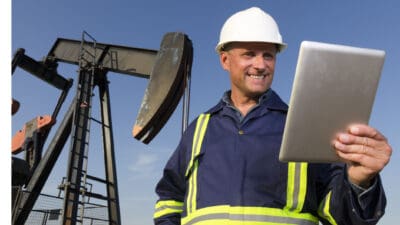On 30 August, the Woodside Energy Group Ltd (ASX: WDS) share price hit a multi-year high of $36.68.
The last time it traded around this level was in January 2020 before COVID-19 hit. Two months later in March 2020, the Woodside share price fell to almost $15. And it's been a volatile road back.
Woodside shares have since slipped from their multi-year high, partially from falling oil prices but also due to losing 5.5% on Thursday when they traded ex-dividend.
Why did the Woodside share price hit a multi-year high?
The Russia-Ukraine war and the resulting gas supply constraints in Europe have buoyed the Woodside share price.
That's hardly surprising given the company is one of the top 10 LNG players in the world following its merger with the petroleum business of BHP Group Ltd (ASX: BHP), which was completed on 1 June.
About 70% of Woodside's assets are involved in gas production. So, a global supply/demand imbalance is a tailwind, to be sure.
Since the Ukraine invasion, growing sentiment in Europe to diversify away from Russia has also been great news for Woodside. Russia supplied the EU with 40% of its natural gas in 2021, with Germany the biggest importer, according to bbc.com.
Those tailwinds have pushed the Woodside share price up by more than 40% in the year to date.
Woodside's recently released half-year FY22 results have contributed to its share price surge as well.
On 30 August, Woodside announced a 400% profit surge and declared the largest interim dividend since 2014.
The dividend, due to be paid on 6 October, is triple the size of the interim dividend paid for the 1H FY21.
The strong performance was attributed to improved reliability at LNG plants plus one month's worth of production from the BHP assets. That production ended up being 17% of Woodside's total production for 1H FY22. Imagine what six months of production will do to Woodside's earnings.
That BHP merger ended up being a pretty timely acquisition given the geopolitical issues in play today.
Aren't Woodside shares doomed in the green energy transition?
It's only natural to assume the global green energy transition is a bad thing for fossil fuel producers like Woodside.
The key word here, though, is transition. Decades of it. The world cannot decarbonise overnight. Renewable energy producers need time to ramp up so they can replace traditional fuels at scale. Additionally, fossil fuels are required to build renewable energy infrastructure like wind turbines.
So, fossil fuel producers like Woodside and Fortescue Metals Group Limited (ASX: FMG) — through its subsidiary Fortescue Future Industries — arguably have the time to adapt their businesses and position themselves to prosper in and after the global green energy transition. And they're seeking to get in now on the opportunities that the transition presents to them.
Woodside and Fortescue, for example, appear to have a two-pronged action plan. They intend to keep on producing fossil fuels while also diversifying into renewables. Plus, the companies are doing things in-house to reduce their carbon emissions so investors won't perceive them to be as carbon dirty as before.
A strategy to 'thrive through the energy transition'
Woodside's half-year report repeats the same phrase a couple of times. Woodside has a "strategy to thrive through the energy transition as a low-cost, lower-carbon energy provider".
Woodside CEO and managing director Meg O'Neill explains:
The upheavals in global and Australian energy markets witnessed over the course of the past six months have shone a spotlight on the importance of gas in the world's energy mix and underscores our confidence in the longer-term demand outlook for gas, which makes up 70% of Woodside's portfolio.
Safe and reliable supplies of gas are not only critical to global energy security but will play a key role as our customers seek to decarbonise, alongside new energy sources such as hydrogen and ammonia that Woodside is investing in.
Our strategy to thrive through the energy transition as a low-cost, lower-carbon energy provider continues to progress through recently announced initiatives across hydrogen refuelling, carbon capture and storage and carbon to products technologies.
How is Woodside preparing for the transition?
Woodside has set a target to invest $5 billion in new energy products and lower-carbon services by 2030.
Among its projects is H2OK, a proposed liquid hydrogen project in Oklahoma in the United States.
Phase 1 involves the construction of an initial 290-megawatt (MW) facility, producing up to 90 tonnes per day (TPD) of liquid hydrogen through electrolysis, initially targeting the heavy transport sector.
Woodside says it is "actively marketing hydrogen offtake and is advancing a number of agreements in support of a targeted final investment decision (FID) in 2023".
There's also H2Perth, a proposed "world-scale liquid hydrogen and ammonia production facility" in Perth, Western Australia. Environmental studies are continuing and Woodside is targeting an FID in 2024.
Woodside also has solar energy, carbon capture and storage, and carbon capture and utilisation projects on the go.
The gas giant said in its half-year report that it's "made progress towards its goal of a 15% reduction in net equity scope 1 and 2 greenhouse gas emissions by 2025 against its 2016-2020 baseline".
Woodside said Sustainalytics had recognised it as an 'ESG industry top rated company' in 1H FY22.









